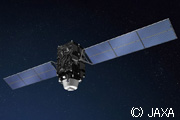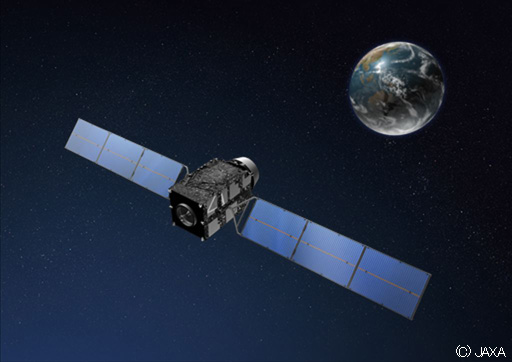Archived content
NOTE: this is an archived page and the content is likely to be out of date.
The first Quasi-Zenith Satellite, "MICHIBIKI"

GPS Availability Enhancement
The combination of a Quasi-Zenith Satellite at a high angle of elevation (basically right overhead) working with GPS allows for more accurate acquisition of positioning and time information; especially in places such as urban canyon and mountainous areas where gaining such information is difficult by GPS alone.
GPS Performance Enhancement
MICHIBIKI will broadcast highly accurate satellite orbit information including the orbits of the GPS satellites, clock error information, and information on electromagnetic wave delays due to the effects of the ionosphere. This will allow more accurate determination of times and positions than by GPS alone.
Positioning information services are utilized in various fields including cellular phones, car navigation, traffic, transportation, measurement, forestry, fishery, and crime-prevention. However, positioning accuracy by GPS satellites is adversely affected in mountainous areas and by building shadows. Depending on GPS satellite visibility conditions, there are frequently cases where positioning accuracy is insufficient. MICHIBIKI is expected to offer a new positioning information service and a broader range of applications through more accurate positioning information regardless of geographic conditions.
Fujitsu has been working on achieving a highly accurate positioning information service through the development, operational preparation, and operation of MICHIBIKI. Fujitsu is supporting the creation of safe and secure societies and living conditions by contributing to space development projects.
System developments
- The development of a Quasi-Zenith Satellite tracking and control system
Orbital dynamics calculation, and satellite data processing - The development of a highly accurate positioning experimentation system
High accuracy orbit and time estimation, creation of navigational message sources, and offline evaluation
Operation support
- Operational study and operational preparation of tracking control and orbital dynamics system
- Operation of orbital dynamics system at launch phase, initial check out phase, and normal operation phase
- Evaluation analysis of technological demonstration experiments using the highly accurate positioning experimentation system
 The first Quasi-Zenith Satellite, "MICHIBIKI"
The first Quasi-Zenith Satellite, "MICHIBIKI" Related Link
Footnotes
1: The first Quasi-Zenith Satellite, "MICHIBIKI"
QZSS (Quasi-Zenith Satellite System) is a satellite positioning system, as exemplified by GPS in the USA and Galileo, which is under development in Europe. In the Japanese system, multiple satellites travel around an inclined geosynchronous Earth orbit called a quasi-zenith orbit so that there is always one satellite at the zenith of Japan.
2: Tanegashima Space Center
The Tanegashima Space Center was established in 1969 when the former National Space Development Agency of Japan was formed, and is the largest rocket launch site in Japan.


